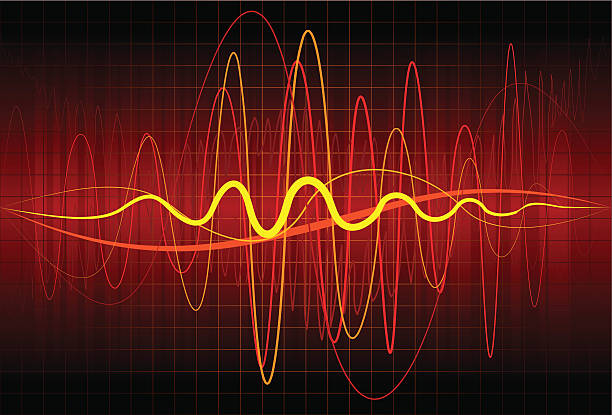Auscultation of atrial fibrillation (AFib) is a critical skill for identifying irregular heart rhythms during a physical examination. It involves listening to heart sounds with a stethoscope to detect abnormalities caused by disorganized electrical signals in the heart. This guide covers everything you need to know about auscultating AFib, related sounds, and distinguishing features compared to similar conditions.
What is Atrial Fibrillation?
Atrial fibrillation occurs when the heart’s upper chambers (atria) beat irregularly due to chaotic electrical signals. This disrupts the normal rhythm and affects blood flow. AFib is a serious condition that increases the risk of complications like stroke, heart failure, and other cardiovascular issues.
How to Auscultate for Atrial Fibrillation
Can You Hear Atrial Fibrillation With a Stethoscope?
Yes, atrial fibrillation can be identified with a stethoscope. When auscultating, the rhythm of the heart sounds becomes irregular and unpredictable. Unlike a normal heart rhythm with steady intervals, AFib sounds chaotic and lacks a pattern.
- Place the stethoscope over the apex of the heart (below the left nipple) or along the sternal border.
- Listen for irregularly timed S1 (lub) and S2 (dub) sounds.
Key Heart Sounds in Atrial Fibrillation
AFib alters the normal S1 and S2 heart sounds, which are caused by the closing of the heart valves.
| Heart Sound | Normal Heart Rhythm | Atrial Fibrillation |
| S1 (Lub) | Regular and consistent | Irregular in intensity and timing |
| S2 (Dub) | Regular and rhythmic | Uneven and inconsistent intervals |
Afib Heart Sounds S3
In some cases, you may hear an S3 heart sound in patients with atrial fibrillation. The S3 sound is a low-pitched, extra “lub-dub-dub” noise that occurs after S2. It is often linked to heart failure or increased left ventricular filling pressures.
Atrial Fibrillation Murmur
While atrial fibrillation itself doesn’t produce a murmur, it can cause secondary conditions that result in murmurs. For example:

- Mitral valve stenosis or regurgitation: Often present in patients with chronic AFib.
- Atrial enlargement: This leads to turbulent blood flow, which may produce a murmur.
A murmur heard during AFib may indicate an underlying structural heart problem.
Atrial Flutter vs. Atrial Fibrillation
What is the Difference Between Atrial Flutter and Atrial Fibrillation on ECG?
| Feature | Atrial Fibrillation (AFib) | Atrial Flutter |
| ECG Pattern | No clear P waves; irregular rhythm | Sawtooth P waves; organized rhythm |
| Rhythm | Irregularly irregular | Regular or slightly irregular |
| Severity | Often more severe | Less severe but still requires attention |
Atrial Flutter vs. Atrial Fibrillation: Which is Worse?
Fibrillation is generally more dangerous because it carries a higher risk of stroke and heart failure. However, both conditions require prompt treatment.
Complications of Atrial Fibrillation
Can You Die From Atrial Flutter or Atrial Fibrillation?
Yes, both conditions can lead to life-threatening complications if untreated. Some potential risks include:
- Stroke: Blood pooling in the atria can form clots, which may travel to the brain.
- Heart Failure: The heart’s inefficiency in pumping blood can lead to fluid buildup and fatigue.
- Sudden Cardiac Arrest: Rare but possible, especially in patients with other heart conditions.
ECG Confirmation for Atrial Fibrillation
If you suspect atrial fibrillation during auscultation, an ECG is the definitive diagnostic tool. Look for:

- Absent P waves.
- Irregularly irregular QRS complexes.
- Variable ventricular rate.
These findings confirm the diagnosis of AFib and differentiate it from atrial flutter or other arrhythmias.
Comparison of Heart Rhythms
| Characteristic | Normal Rhythm | Atrial Fibrillation | Atrial Flutter |
| Regularity | Regular | Irregular | Regular or mildly irregular |
| ECG P waves | Clear and consistent | Absent | Sawtooth pattern |
| Heart sounds | Steady S1 and S2 | Irregular S1 and S2 | May have a regular rhythm |
Practical Tips for Auscultation
- Find a quiet space: Minimize background noise to hear heart sounds clearly.
- Use the bell and diaphragm: The diaphragm is best for high-pitched sounds (S1, S2), while the bell detects low-pitched sounds like S3.
- Practice regularly: Listen to recordings or use patient simulators to improve your recognition skills.
Conclusion: Understanding Auscultation of Atrial Fibrillation
Auscultation of atrial fibrillation is a valuable skill for detecting this common yet serious arrhythmia. By recognizing irregular S1 and S2 heart sounds or the presence of an S3, you can identify AFib early and seek proper care. Always confirm your findings with an ECG and stay vigilant for complications like stroke or heart failure.
Detecting and managing AFib can save lives, so take the time to hone your skills and listen carefully. With practice, you’ll become confident in identifying this critical condition.


